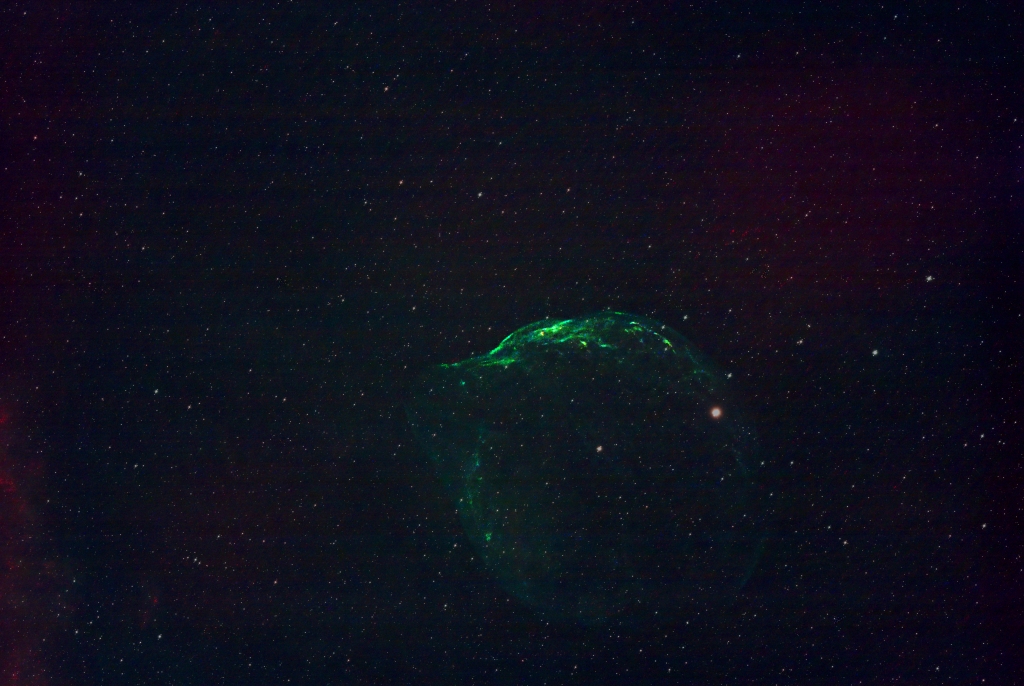Hold onto your fins, space voyagers! Today, we’re plunging into the celestial ocean to encounter the playful Dolphin Head Nebula, also known as SH2-308. This captivating cloud of gas and dust, roughly 4,530 light-years away in the constellation Canis Major, isn’t just a cosmic oddity – it’s a window into the birth of stars and the dynamic tapestry of the universe.
Sculpted by Stellar Winds:
The Dolphin Head’s iconic silhouette, complete with its prominent eye, curved blowhole, and graceful fin, isn’t formed by chance. It’s a product of the intense sculpting power of nearby stars. Their energetic winds carve away at the nebula’s dusty material, leaving behind the playful shape we recognize today.

A Stellar Cradle:
But the Dolphin Head is more than just a pretty face; it’s a bustling stellar nursery! Deep within its dusty folds, new stars are igniting, their fires fueled by collapsing gas and dust. These young stars bathe the nebula in a soft, reddish glow, adding to its ethereal beauty.
A Challenge for Skywatchers:
While spotting the Dolphin Head with the naked eye under exceptionally dark skies is possible, it truly reveals its secrets through a telescope. Long exposure astrophotography unlocks the nebula’s intricate details, showcasing the wispy tendrils, subtle color variations, and the faint glimmer of newborn stars nestled within.
The picture displayed here was captured with an SVBony 80mm triplet refractor at f6 with 480mm focal length. The camera was a one shot color camera, SVBony 405cc cooled to -5°C. 2 hours of exposures, each one lasting 120 seconds. A ZWO AM5 mount with guide camera controlled through PHD2 software. A dual band filter was used to help with light pollution and bring out the nebulosity. This is a very faint target, and so much more time is required to see more fine details. I plan to revisit this target and try to gather at least 8 hours of data to add with this.
A Beacon for Astronomers:
Beyond its captivating appearance, the Dolphin Head Nebula holds immense scientific value. By studying its structure, composition, and stellar formation processes, astronomers gain insights into the early stages of star birth, the fascinating life cycle of stars, and the dynamics of interstellar gas clouds.
Your Cosmic Adventure Awaits:
Ready to embark on your own cosmic adventure with the Dolphin Head Nebula? Here’s how:
- Challenge yourself: If you have access to binoculars and a dark sky location, try hunting for the Dolphin Head near the constellation Canis Major. Can you decipher the playful dolphin amidst the stars?
- Dive deeper: Explore online resources and astrophotography communities dedicated to the Dolphin Head Nebula. Discover stunning images, detailed information, and the latest scientific discoveries about this celestial wonder.
- Become a citizen scientist: Contribute to projects like Globe at Night, which helps track changes in light pollution and protect the dark skies essential for observing the Dolphin Head Nebula and other celestial treasures.
Remember, the universe is an ocean of wonders waiting to be explored. So, keep looking up, keep learning, and let your curiosity guide you. The playful dolphin in the deep sky awaits your cosmic visit!
Discover more from Nicks Astrophotography
Subscribe to get the latest posts to your email.

